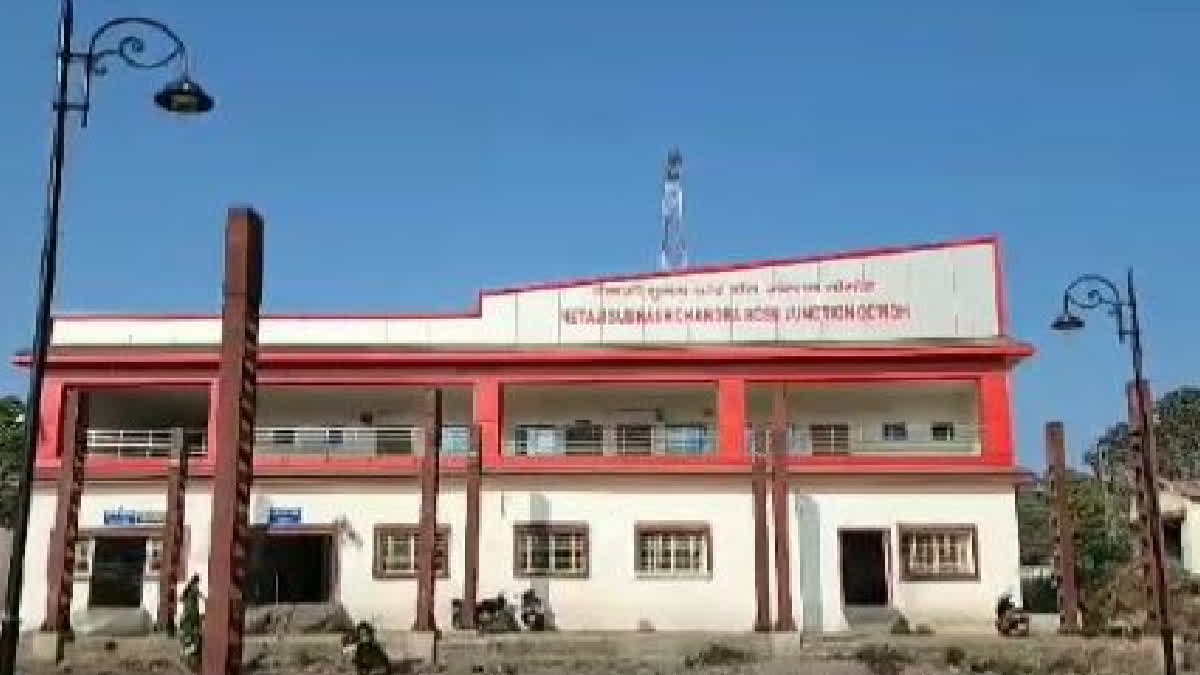Dhanbad: Do you know why Gomoh, a railway station on the Patna-Dhanbad section of the East Central Railway (ECR) zone, was named after Netaji Subhas Chandra Bose? The otherwise little-known place has a connection with Netaji and the Indian Independence struggle.
Netaji Subhas Chandra Bose was last seen in Gomo. Where did he go after this, none knows.
On Thursday, January 23, the birth anniversary of Netaji Subhas Chandra Bose, when the countrymen celebrated the day as Parakram Diwas, locals of Gomo recalled the legendary freedom fighter.
SN Fakrulla, an advocate by profession, said he had heard about Netaji from his grandfather, who was also a freedom fighter. According to him, his grandfather Sheikh Abdullah was fully aware about Netaji's 'Great Escape'. According to him, Netaji had stayed for some time at a house in Abdullah Colony Haata in Loco Bazar of Gomo. Fakrulla, who now lives at the house, said, "My grandfather Sheikh Abdullah was a freedom fighter as well as a good friend of Netaji. They fought the freedom struggle together. This colony is named after him."
According to him, Netaji reached here on January 18, 1941, at around five-six in the evening. "Netaji had asked my grandfather to help him get a train. He was in a hurry as the British police were looking for him. My grandfather's tailor, Amin was asked to arrange for Netaji's boarding on the train at Gomo station. His ticket to Peshawar was booked and he had left for the Pakistan city from Gomo," Fakrulla said.
Gomoh railway station gets new name
The Gomoh railway station was renamed Netaji Subhas Chandra Bose Gomoh Junction to honour the freedom fighter in 2009, 68 years after his mysterious disappearance in 1941.
Netaji Subhas Chandra Bose left Gomo station on the night of January 18 in the disguise of a Pathan man in Peshawar Mail, which was later named Kalka Mail and now Netaji Express. Netaji left for a secret destination by this train on a journey which is known as 'Nishkraman Yatra.'
Historical documents showed when Netaji Subhas Chandra Bose was arrested, he had planned to escape in disguise with his friend Satyabrata Banerjee. Netaji was released after his health deteriorated.
On 2 July 1940, during the Hallwell movement, Netaji was arrested in Kolkata under Section 129 of the Indian Defense Act. He went on a hunger strike in the Presidency Jail. Due to this, his health deteriorated. Given his deteriorating health, the British government released him on December 5, 1940, on the condition that he could be arrested again as soon as his health improved. After being released from here, he went to his residence on Elgin Road.
The hearing of Netaji's case was to be held on January 27, 1941, but the British government was surprised when they came to know on January 26 that Netaji was not in Kolkata. An alert message was sent to the soldiers to find him, but by then Netaji had started preparing for his escape with the help of his close associates.
According to the plan, Netaji disguised himself, boarded a car and set out on his journey from Calcutta at around 1 am on the night of January 16-17. According to this plan, Netaji reached Gomo in his Baby Austin car. He had arrived here in the disguise of a Pathan. On 18 January 1941, wearing an old blanket, Netaji boarded the Howrah-Peshawar Mail (now Netaji Mail) from Gomo station in Dhanbad and after this, he was lost in oblivion.
A bronze statue of Netaji has been installed between platform number one and two of the station premises. Chamber of Commerce President Dheeraj Kumar, who is also local, said Netaji Subhas Chandra Bose left for Peshawar from Gomo station by Kalka Mail train. "On January 18, Netaji Subhash Chandra Bose Express train was decorated," he said.
PC Mandal, former chief yard master of Netaji Subhas Chandra Bose Junction, said Bose had stayed at Loco Bazar and then from there, he reached the station in the disguise of a Pathan man.



